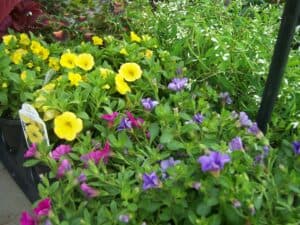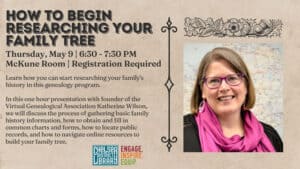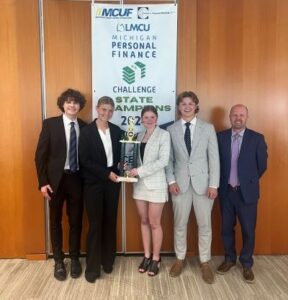
(Chelsea Update would like to thank Jennifer Fairfield, owner of the Garden Mill for the information in this column. This is the second part of a two-part column. Part 1 published yesterday.)
In the flower garden:
Plant summer-blooming bulbs if you haven’t already. This includes dahlias, gladiolus, lilies, begonias and canna lilies.
Wait to trim back the foliage of your spring blooming bulbs, such as daffodils, tulips and alliums, until the foliage has died completely. Although you may be tempted to trim them sooner to tidy up, leaving the foliage will help the bulb use the sun’s energy to feed itself for next year’s blooms.
Prune back early-blooming shrubs such as forsythia and quince after they have finished blooming. This will encourage new growth and more flowers next spring.
You can pinch back evergreens once they have put out new growth. Pinching the new “candles” back by half will encourage them to bush out. But don’t cut into old wood, as most evergreens won’t produce new shoots from old growth.
Planting of trees, shrubs, annuals and perennials should be in full swing this month. When deciding what trees, shrubs and perennials to plant, consider natives. Native plants help to support more of our native insects, which is actually a good thing.
For example, while butterfly bush is beautiful, and will attract adult butterflies, it doesn’t supply the young butterflies (caterpillars) with any food, so the butterflies you see today will not be producing new butterflies for tomorrow. If instead, you plant butterfly weed or other milkweeds, you’ll not only get the adult butterflies visiting the pretty flowers today, you will also see more butterflies tomorrow and next year because the young butterfly larva had something to eat.
Milkweeds are the only food Monarch butterfly caterpillars can eat, and since there is a severe decline in the numbers of Monarchs, planting milkweeds could go a long way to helping them survive.
The other benefit to growing native plants that support insects is that insects are the major source of food for all birds. This includes the birds you see at your feeders, such as chickadees and finches, as well as hummingbirds. Hummingbirds don’t feed their young the sugar-water you put out for them. They feed them insects, and they eat lots of insects themselves. Giving the insects something to eat supplies the birds something to eat.
While it may seem odd that I am encouraging insects eating your garden plants, it is actually a good thing to have some of them. An overabundance is not a good thing certainly, but some insects are necessary to keep things in balance in your yard and garden. This is also why it’s important not to spray lots of pesticides all over the yard and garden.
Pesticides have their place, but should be used with caution, so as not to kill things that we don’t want to kill. This goes for both insecticides and herbicides.
I had someone recently tell me he hates dandelions – major emphasis on the word hate. But the thing about dandelions is that they are an important flower in our ecosystem. They are one of the first flowers to bloom in the spring, and are an important source of food for beneficial bees when there is nothing else to eat.

Take away all the dandelions, and you take away the food for the bumblebees and honeybees that are out in the early spring. If they have nothing to eat then, they aren’t going to be around to help pollinate the things you want them to pollinate in your garden later in the season (nor will they be around to pollinate all the other foods we depend on them for).
So go easy on the herbicides, and maybe let a few dandelions go. If you absolutely have to spray, use a targeted sprayer, and only spray individual plants, so that you aren’t killing things you aren’t intending to.
For the Birds:
Have you been watching the birds in your yard as they’ve built their nests, laid eggs, and then worked feverishly to feed their young? Isn’t it fun?! There’s a robin’s nest in the tree right outside my kitchen window, and I have been watching mom and dad fly back-and-forth over-and-over again trying to keep the babies fed. The nesting boxes in my yard are at full occupancy, too.
We also had a killdeer nest just to the side of our driveway earlier. Killdeer generally build their nests on the ground, in areas where there is some gravel for their eggs to blend in with. If a predator (or something that they perceive as a predator, like us) comes along, the parents will leave the nest and try to get the predator to follow them away.
They do this by running a little distance away and then feigning a broken wing. If the predator approaches, they simply fly off. The parents in our nest led my car up the driveway every morning to be sure it wasn’t going to get the eggs. It was fun to watch, though probably a bit stressful to the birds.
Unfortunately, we didn’t get to see the babies hatch. I’ve had the privilege of watching them hatch and fledge in the past, and it’s one of the most adorable things you will ever see – the babies look like little wind-up toys. Unlike birds that nest in trees and houses, these guys fledge from their nest within hours of being born. But they don’t fly – they run.
Here’s a video of the parents trying to lead people away, and the babies fledging. I feel badly for the family of birds being surrounded by so many people, but they did pick a pretty public place to put their nest. Maybe next year they will find a more secluded spot.
Keep an eye out in your yard for things like killdeer nests, and be careful to keep activity away from them as much as possible. Also watch out for baby birds that have left the nest but not yet mastered flight. They probably don’t need your help, unless they are somewhere where they might be in danger, like in the road, but do watch for them as you go about your yard to be sure that you aren’t putting them in danger with things like power equipment.
If you haven’t seen Baltimore orioles at your feeders lately, don’t despair. They are probably still hanging around your yard, but are busy feeding their young insects. Leave the feeders out – hummingbirds will gladly drink from them, and once the oriole babies are out of the nest, the parents may bring them to the feeders to help them fatten up for the trip south.
Also, if you have an orange feeder (one that you put orange halves on), you might get other visitors. The red-bellied woodpeckers in my yard love oranges. Even though I haven’t seen my orioles for about two weeks, I know they’re still hanging around because I can hear them. If you’re not sure what they sound like, check out the Cornell Lab of Ornithology’s website, here. You can click on the oriole and then go to sounds to hear their various songs and calls.
Keep your feeders and birdbaths full, and don’t stop feeding the birds. Seed isn’t the main source of food for them at this time of year, but it does supplement their diet, and it brings them to your yard, which is lots of fun. And while they’re in your yard, they are likely eating your insects.



















